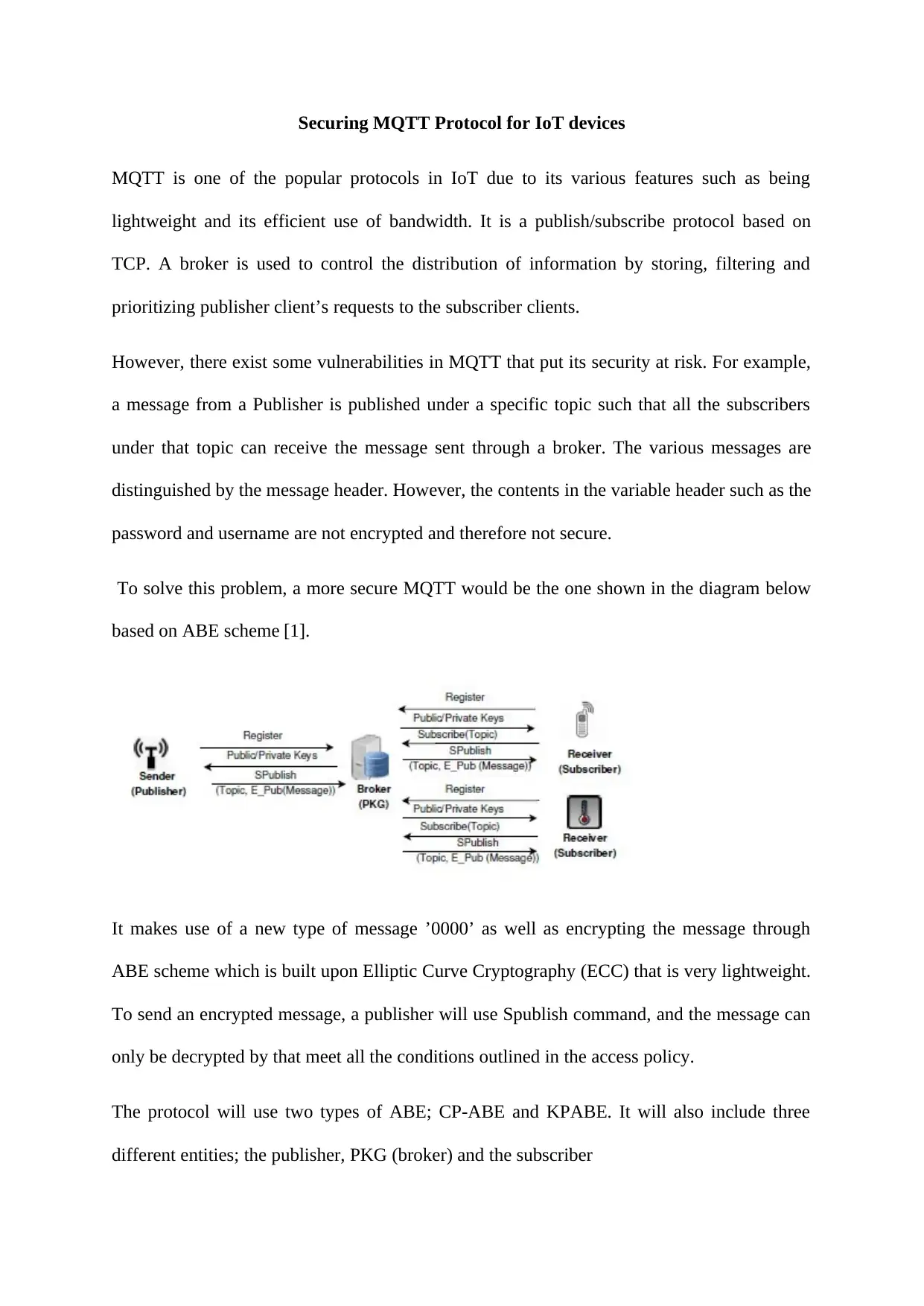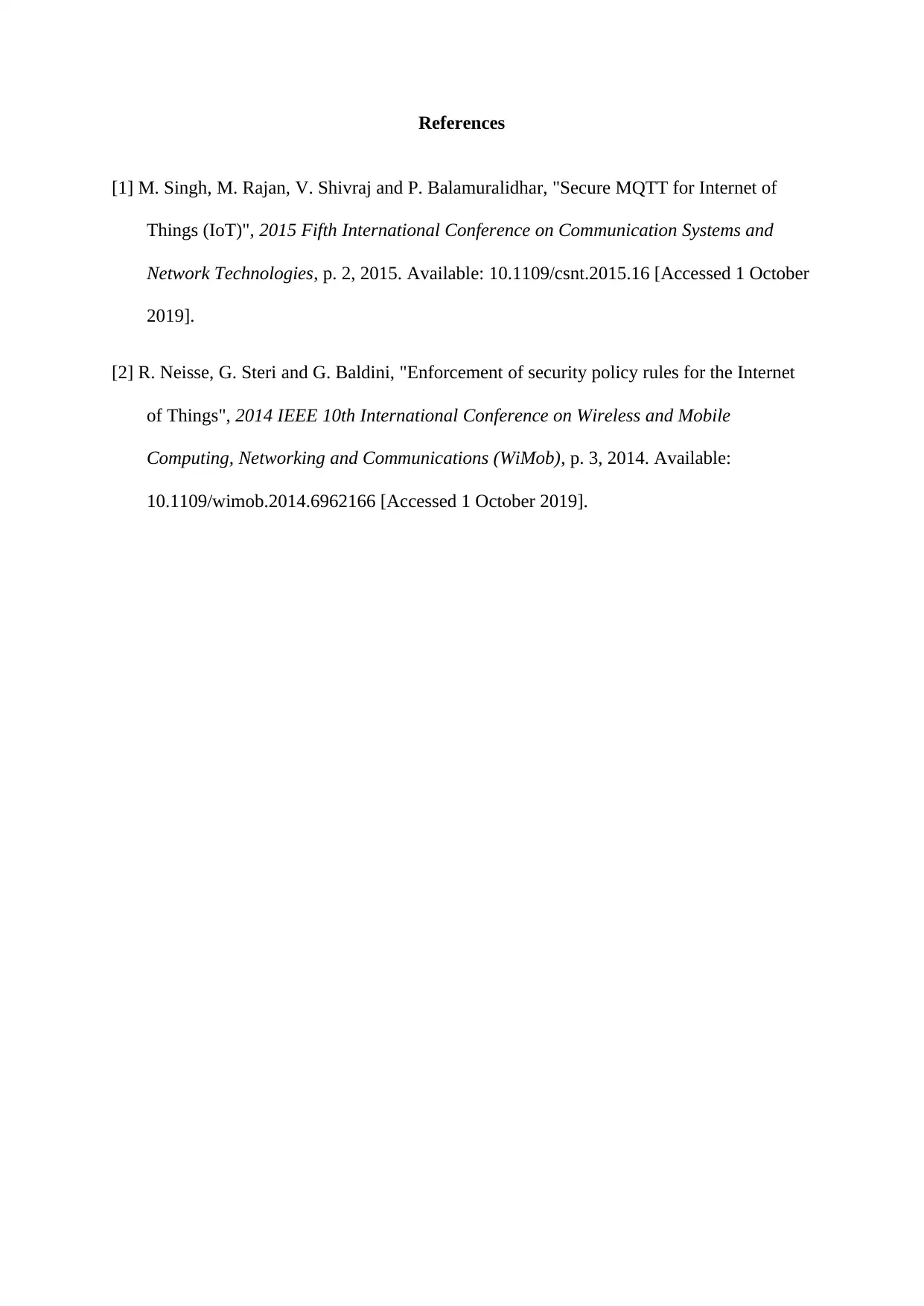Analysis of Secure MQTT Protocol for IoT Device Communication
VerifiedAdded on 2022/10/06
|3
|448
|1
Report
AI Summary
This report addresses the security vulnerabilities of the MQTT protocol, a popular choice for IoT device communication. It highlights the risks associated with unencrypted data in MQTT headers and proposes a secure MQTT protocol based on the Attribute-Based Encryption (ABE) scheme, leveraging Elliptic Curve Cryptography (ECC) for lightweight encryption. The proposed protocol utilizes CP-ABE and KP-ABE, incorporating publishers, brokers (PKG), and subscribers. Furthermore, the report explores additional security enhancements, including message delay, identity obfuscation, message enforcement, and advanced DoS detection. These measures aim to prevent real-time tracking, protect user privacy, and ensure secure data transmission in IoT environments. The paper references research papers that provide the basis for the proposed secure MQTT protocol and its feasibility for various IoT requirements through simulations and evaluation of their performance.
1 out of 3





![[object Object]](/_next/static/media/star-bottom.7253800d.svg)